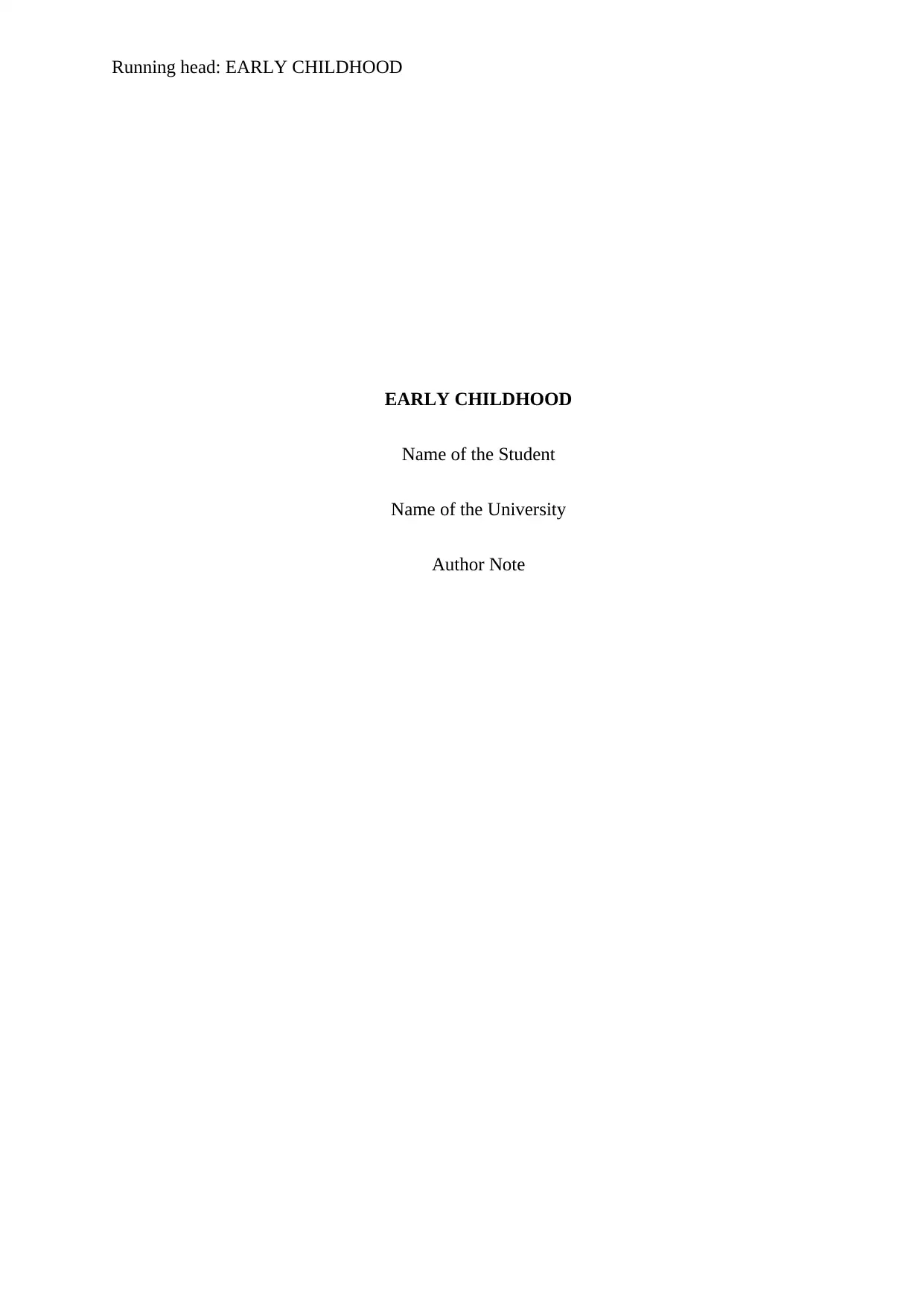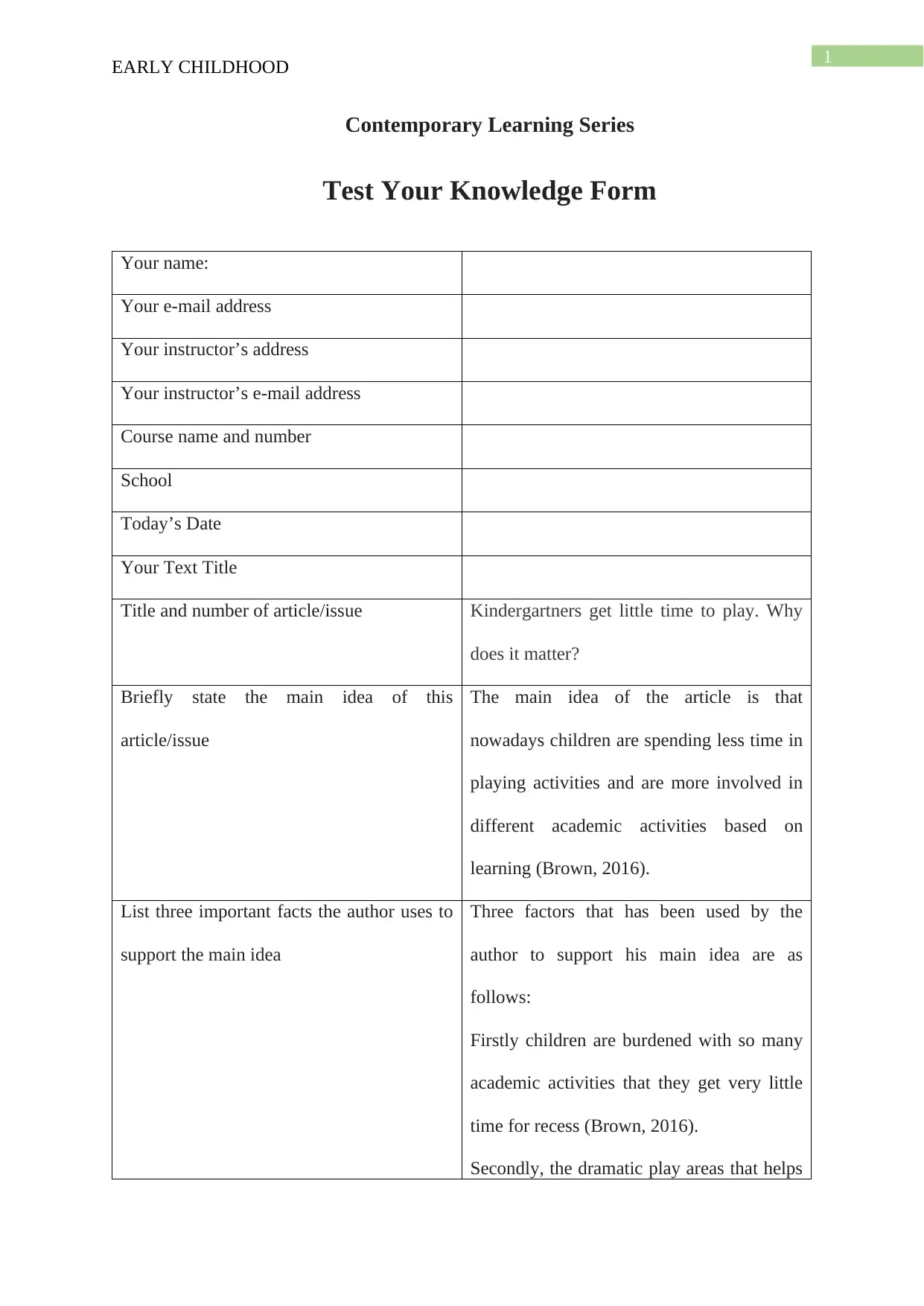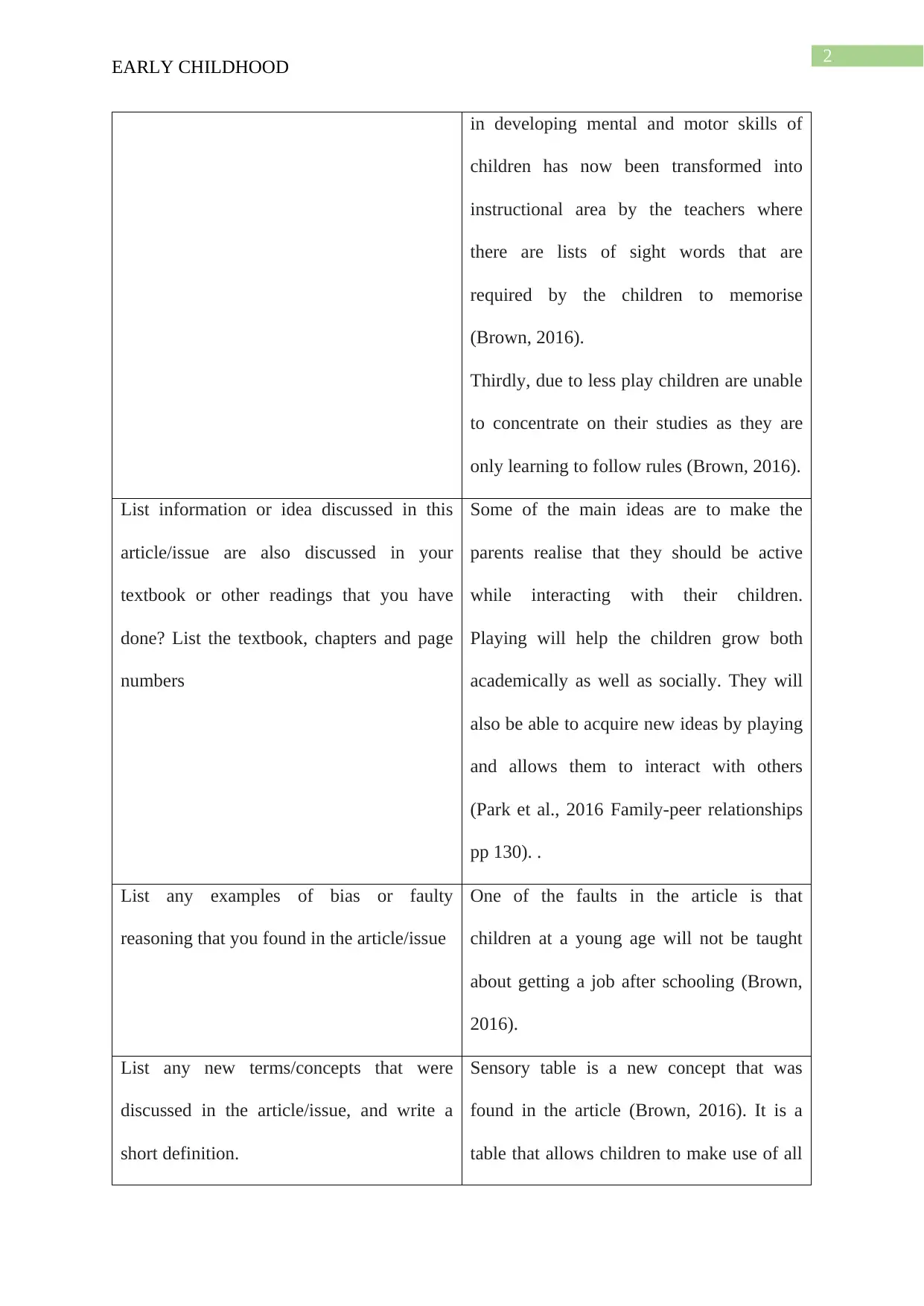Kindergarten Play Analysis: Early Childhood Education Course Project
VerifiedAdded on 2022/09/02
|5
|525
|20
Homework Assignment
AI Summary
This assignment analyzes the impact of reduced playtime on kindergarteners, drawing upon the article "Kindergartners Get Little Time to Play, Why Does It Matter?" by Brown (2016). The assignment requires a summary of the article's main idea, which is that children are spending less time in play and more time on academic activities. The assignment identifies three key supporting facts: reduced recess time, the transformation of play areas into instructional spaces, and the resulting inability of children to concentrate. The assignment also discusses the relevance of the article's ideas to other readings, identifies biases, and defines the concept of a sensory table. The assignment uses a "Test Your Knowledge" format to explore these concepts, referencing the work of Parke et al. (2016) to highlight the importance of play in child development, both academically and socially.
1 out of 5










![[object Object]](/_next/static/media/star-bottom.7253800d.svg)